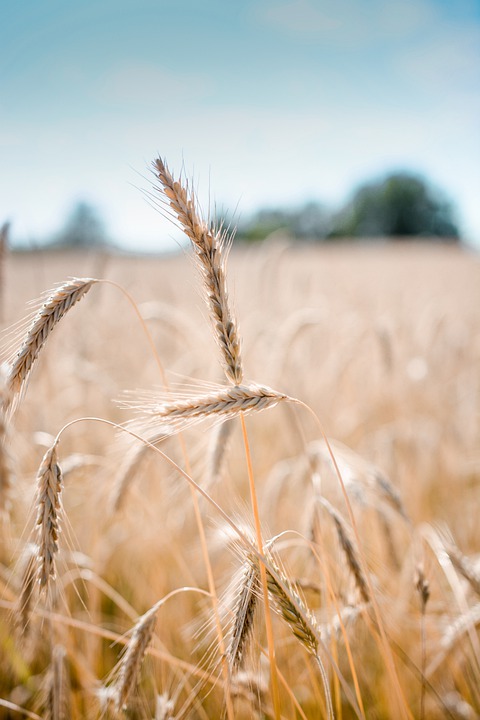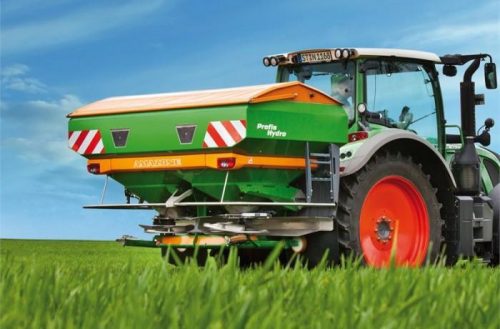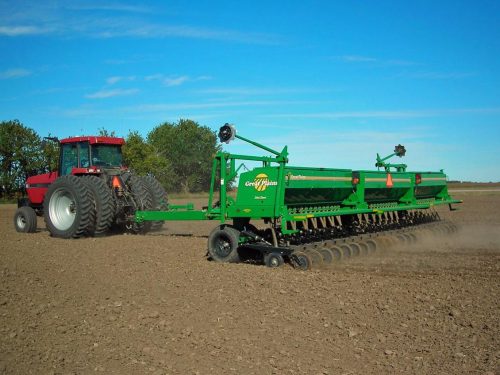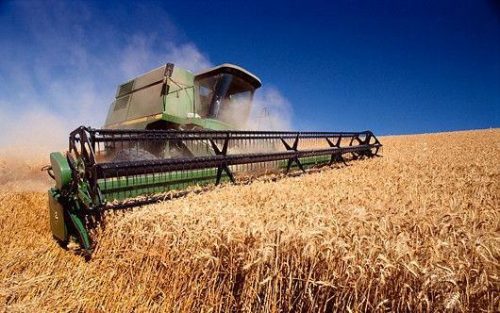Wheat, cultivation and harvesting technology
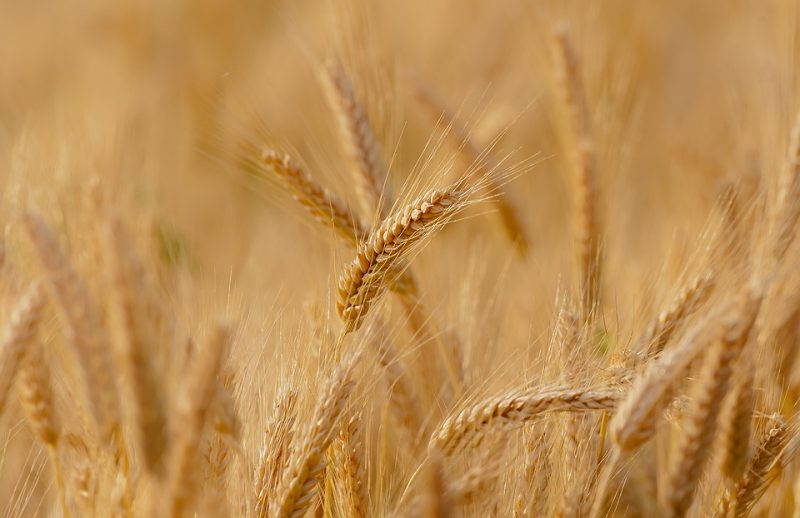
Wheat (Triticum aestivum) is the most important cultivated plant in the world (in over 100 countries). The wheat plant is very important in the food industry and it is used especially for flour production. The stems left after harvest are used as raw material in the manufacture of cellulose. They are also used in animal feed or as organic fertilizer. Bran (residues from the milling industry) is a concentrated feed, rich in protein and mineral salts. Wheat cultivation is a good preceding plant for most crops and has the advantage that it is 100% mechanized.
The stem is a straw, made up of 5-7 internodes. The root is fascicular. The leaves are sessile, with a developed sheath, the foliar limb is linear. The inflorescence is a compound spike, made up of a rachis on which multi-floral spikelets are attached. The fruit is a caryopsis.
The vegetative growth period
The vegetative growth period of autumn wheat lasts 270-290 days. During this period, the wheat plants go through the following phenological phases:
- Germination: In ideal conditions of temperature and humidity, wheat germinates in 8-10 days. In case of a drought, 15-20 days are needed for sprouting.
- Rooting and development of the first leaves: After sprouting, the plant develops the first leaf and begins the process of photosynthesis.
- Tillering: When the plant develops the third leaf, the tillering process begins. Normally, the tillering takes place in the fall and can continue in winter.
- Straw elongation: It starts when the stem is 5 cm long. The elongation take place at the meristems level, at the base of the internodes.
- Spike development and flowering: The straw elongation stage is marked by the appearance of the spike. After a few days the flowering takes place. The flowers open and the stamens become visible.
- Grain formation: After fertilization, the grain grows in length, then it increases in thickness. The grains are then filled with the substances assimilated by the plant during this period.
Environmental and soil requirements
Wheat seeds require for germination minimum temperatures of 1-3° C. The tillering process begins at 8-10° C and stops at 5° C. The optimum soil moisture should be 70-80%, for the seeds to germinate normally. The maximum water requirements are during the stages of spike development, fertilization, and grain formation. Wheat prefers soils with a neutral or slightly acidic pH, with a loamy or loamy-clayey texture.
Wheat crop technology
Crop rotation
Wheat should be sown in early autumn. It must grow and tiller in order to survive the winter. For these reasons, wheat prefers precursor plants with an early harvest that allow a proper time for soil works, so that, until autumn, it settles and accumulates water. The best precursors for wheat are peas, beans, early potatoes, clover, soybeans, sugar beets, sunflowers, corn, corn silage. Monoculture can be achieved just for 2 years. It cannot be achieved on the surfaces destined for seed plots. Repeated cultivation of wheat leads to the propagation of specific weeds, diseases, and pests.
Fertilization
Wheat reacts positively to fertilizers. The doses have to be established after the agrochemical analysis of the soil, depending on the expected harvest and the requirements of the plants in certain phases of vegetative growth. Mineral fertilizers can be administered starting with autumn, this being the period of rooting-tillering and accumulation of supplies for winter. In spring, once the vegetative growth begins, the fractional administration of mineral fertilizers can be resumed.
Wheat crops also react favorably to the application of organic fertilizers. Organic fertilizers can be applied directly to the wheat crop or to the precursor plant.
Recommended products
-
You can find products on a different store
Change Store -
You can find products on a different store
Change Store -
You can find products on a different store
Change Store -
You can find products on a different store
Change Store -
You can find products on a different store
Change Store -
You can find products on a different store
Change Store -
You can find products on a different store
Change Store -
You can find products on a different store
Change Store -
You can find products on a different store
Change Store -
You can find products on a different store
Change Store -
You can find products on a different store
Change Store -
You can find products on a different store
Change Store -
You can find products on a different store
Change Store -
You can find products on a different store
Change Store -
You can find products on a different store
Change Store -
You can find products on a different store
Change Store -
You can find products on a different store
Change Store -
You can find products on a different store
Change Store -
You can find products on a different store
Change Store -
You can find products on a different store
Change Store -
You can find products on a different store
Change Store -
You can find products on a different store
Change Store -
You can find products on a different store
Change Store -
You can find products on a different store
Change Store
Field works
Wheat does not require too deep plowing. After harvesting the precursor plants, plowing has to be carried out. The aim is to grind the vegetable waste and mix it with the soil. This work also grinds the surface layer of the soil. Plowing should be done immediately after weeding and the aim is to rummage the soil to a depth of 20 cm. If the soil moisture does not allow plowing in optimal conditions, you must wait for significant rainfall first. If the environmental conditions do not improve, the plowing can be replaced with two works done with a disc harrow. The preparation of the seedbed must be done just before sowing with works carried out with the combine.
Seeds and sowing
The seed must have a minimum purity of 98% and a germination capacity of at least 85%. Hybrid zonation is a step that should not be ignored. The sowing season is established so that, until winter, the plants vegetate for 40-50 days and accumulate 400-500 degrees Celsius. The quantity of seeds per hectare is between 200 and 250 kg/ha. The distance between the rows is usually 12.5 cm.
Recommended products
-
You can find products on a different store
Change Store -
You can find products on a different store
Change Store -
You can find products on a different store
Change Store -
You can find products on a different store
Change Store -
You can find products on a different store
Change Store -
You can find products on a different store
Change Store -
You can find products on a different store
Change Store -
You can find products on a different store
Change Store -
You can find products on a different store
Change Store -
You can find products on a different store
Change Store -
You can find products on a different store
Change Store -
You can find products on a different store
Change Store -
You can find products on a different store
Change Store -
You can find products on a different store
Change Store -
You can find products on a different store
Change Store -
You can find products on a different store
Change Store -
You can find products on a different store
Change Store -
You can find products on a different store
Change Store -
You can find products on a different store
Change Store -
You can find products on a different store
Change Store -
You can find products on a different store
Change Store -
You can find products on a different store
Change Store -
You can find products on a different store
Change Store -
You can find products on a different store
Change Store
Rolling
It has to be done after sowing if the soil is loose and dry. This operation puts the seed in contact with the soil, favouring the absorption of water.
Diseases and pests
The main diseases that can occur in wheat crops are powdery mildew, Septoria leaf spot, Fusariosis, rust, Karnal bunt of wheat, and loose smut of wheat. Among the pests, the most common are: stink bug, oat leaf beetle, saddle gall midge, shining leaf chafer, European wheat stem sawfly, and cereal ground beetle.
Weed control
In order to reduce the weeds and prevent their appearance, a series of measures can be taken such as crop rotation, soil works, sowing at the optimum time, and application of herbicides.
Recommended products
-
You can find products on a different store
Change Store -
You can find products on a different store
Change Store -
You can find products on a different store
Change Store -
You can find products on a different store
Change Store -
You can find products on a different store
Change Store -
You can find products on a different store
Change Store -
You can find products on a different store
Change Store -
You can find products on a different store
Change Store -
You can find products on a different store
Change Store -
You can find products on a different store
Change Store -
You can find products on a different store
Change Store -
You can find products on a different store
Change Store -
You can find products on a different store
Change Store -
You can find products on a different store
Change Store -
You can find products on a different store
Change Store -
You can find products on a different store
Change Store -
You can find products on a different store
Change Store -
You can find products on a different store
Change Store -
You can find products on a different store
Change Store -
You can find products on a different store
Change Store -
You can find products on a different store
Change Store -
You can find products on a different store
Change Store -
You can find products on a different store
Change Store -
You can find products on a different store
Change Store
Irrigation
The wheat needs 3500-4500 cubic meters/ha of water during the vegetative growth period. This is only in a proportion of 70-75% naturally supplied. The most effective watering is the one applied in autumn. One of the most used watering methods is sprinkling.
Harvesting
Wheat harvesting is done when the grains reach a humidity of 14-15%. At this moment, the harvest is done without losses and no special drying operations are required. Harvesting can begin when the grains have a moisture content of 18% if a large area needs to be harvested. Harvesting must be completed by the time the grain has reached 12% humidity.














































































































































































































































































































































































































































